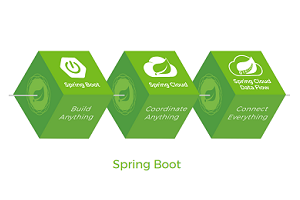死磕 java集合之LinkedBlockingQueue源码分析
问题
(1)LinkedBlockingQueue的实现方式?
(2)LinkedBlockingQueue是有界的还是无界的队列?
(3)LinkedBlockingQueue相比ArrayBlockingQueue有什么改进?
简介
LinkedBlockingQueue是java并发包下一个以单链表实现的阻塞队列,它是线程安全的,至于它是不是有界的,请看下面的分析。
源码分析
主要属性
// 容量
private final int capacity;
// 元素数量
private final AtomicInteger count = new AtomicInteger();
// 链表头
transient Node<E> head;
// 链表尾
private transient Node<E> last;
// take锁
private final ReentrantLock takeLock = new ReentrantLock();
// notEmpty条件
// 当队列无元素时,take锁会阻塞在notEmpty条件上,等待其它线程唤醒
private final Condition notEmpty = takeLock.newCondition();
// 放锁
private final ReentrantLock putLock = new ReentrantLock();
// notFull条件
// 当队列满了时,put锁会会阻塞在notFull上,等待其它线程唤醒
private final Condition notFull = putLock.newCondition();
(1)capacity,有容量,可以理解为LinkedBlockingQueue是有界队列
(2)head, last,链表头、链表尾指针
(3)takeLock,notEmpty,take锁及其对应的条件
(4)putLock, notFull,put锁及其对应的条件
(5)入队、出队使用两个不同的锁控制,锁分离,提高效率
内部类
static class Node<E> {
E item;
Node<E> next;
Node(E x) { item = x; }
}
典型的单链表结构。
主要构造方法
public LinkedBlockingQueue() {
// 如果没传容量,就使用最大int值初始化其容量
this(Integer.MAX_VALUE);
}
public LinkedBlockingQueue(int capacity) {
if (capacity <= 0) throw new IllegalArgumentException();
this.capacity = capacity;
// 初始化head和last指针为空值节点
last = head = new Node<E>(null);
}
入队
入队同样有四个方法,我们这里只分析最重要的一个,put(E e)方法:
public void put(E e) throws InterruptedException {
// 不允许null元素
if (e == null) throw new NullPointerException();
int c = -1;
// 新建一个节点
Node<E> node = new Node<E>(e);
final ReentrantLock putLock = this.putLock;
final AtomicInteger count = this.count;
// 使用put锁加锁
putLock.lockInterruptibly();
try {
// 如果队列满了,就阻塞在notFull条件上
// 等待被其它线程唤醒
while (count.get() == capacity) {
notFull.await();
}
// 队列不满了,就入队
enqueue(node);
// 队列长度加1
c = count.getAndIncrement();
// 如果现队列长度如果小于容量
// 就再唤醒一个阻塞在notFull条件上的线程
// 这里为啥要唤醒一下呢?
// 因为可能有很多线程阻塞在notFull这个条件上的
// 而取元素时只有取之前队列是满的才会唤醒notFull
// 为什么队列满的才唤醒notFull呢?
// 因为唤醒是需要加putLock的,这是为了减少锁的次数
// 所以,这里索性在放完元素就检测一下,未满就唤醒其它notFull上的线程
// 说白了,这也是锁分离带来的代价
if (c + 1 < capacity)
notFull.signal();
} finally {
// 释放锁
putLock.unlock();
}
// 如果原队列长度为0,现在加了一个元素后立即唤醒notEmpty条件
if (c == 0)
signalNotEmpty();
}
private void enqueue(Node<E> node) {
// 直接加到last后面
last = last.next = node;
}
private void signalNotEmpty() {
final ReentrantLock takeLock = this.takeLock;
// 加take锁
takeLock.lock();
try {
// 唤醒notEmpty条件
notEmpty.signal();
} finally {
// 解锁
takeLock.unlock();
}
}
(1)使用putLock加锁;
(2)如果队列满了就阻塞在notFull条件上;
(3)否则就入队;
(4)如果入队后元素数量小于容量,唤醒其它阻塞在notFull条件上的线程;
(5)释放锁;
(6)如果放元素之前队列长度为0,就唤醒notEmpty条件;
出队
出队同样也有四个方法,我们这里只分析最重要的那一个,take()方法:
public E take() throws InterruptedException {
E x;
int c = -1;
final AtomicInteger count = this.count;
final ReentrantLock takeLock = this.takeLock;
// 使用takeLock加锁
takeLock.lockInterruptibly();
try {
// 如果队列无元素,则阻塞在notEmpty条件上
while (count.get() == 0) {
notEmpty.await();
}
// 否则,出队
x = dequeue();
// 获取出队前队列的长度
c = count.getAndDecrement();
// 如果取之前队列长度大于1,则唤醒notEmpty
if (c > 1)
notEmpty.signal();
} finally {
// 释放锁
takeLock.unlock();
}
// 如果取之前队列长度等于容量
// 则唤醒notFull
if (c == capacity)
signalNotFull();
return x;
}
private E dequeue() {
// head节点本身是不存储任何元素的
// 这里把head删除,并把head下一个节点作为新的值
// 并把其值置空,返回原来的值
Node<E> h = head;
Node<E> first = h.next;
h.next = h; // help GC
head = first;
E x = first.item;
first.item = null;
return x;
}
private void signalNotFull() {
final ReentrantLock putLock = this.putLock;
putLock.lock();
try {
// 唤醒notFull
notFull.signal();
} finally {
putLock.unlock();
}
}
(1)使用takeLock加锁;
(2)如果队列空了就阻塞在notEmpty条件上;
(3)否则就出队;
(4)如果出队前元素数量大于1,唤醒其它阻塞在notEmpty条件上的线程;
(5)释放锁;
(6)如果取元素之前队列长度等于容量,就唤醒notFull条件;
总结
(1)LinkedBlockingQueue采用单链表的形式实现;
(2)LinkedBlockingQueue采用两把锁的锁分离技术实现入队出队互不阻塞;
(3)LinkedBlockingQueue是有界队列,不传入容量时默认为最大int值;
彩蛋
(1)LinkedBlockingQueue与ArrayBlockingQueue对比?
a)后者入队出队采用一把锁,导致入队出队相互阻塞,效率低下;
b)前才入队出队采用两把锁,入队出队互不干扰,效率较高;
c)二者都是有界队列,如果长度相等且出队速度跟不上入队速度,都会导致大量线程阻塞;
d)前者如果初始化不传入初始容量,则使用最大int值,如果出队速度跟不上入队速度,会导致队列特别长,占用大量内存;
欢迎关注我的公众号“彤哥读源码”,查看更多源码系列文章, 与彤哥一起畅游源码的海洋。
 关注公众号
关注公众号
低调大师中文资讯倾力打造互联网数据资讯、行业资源、电子商务、移动互联网、网络营销平台。
持续更新报道IT业界、互联网、市场资讯、驱动更新,是最及时权威的产业资讯及硬件资讯报道平台。
转载内容版权归作者及来源网站所有,本站原创内容转载请注明来源。
-
上一篇

Go 定时器内部实现原理剖析
前言 前面我们介绍了一次性定时器Timer和周期性定时器Ticker,这两种定时器内部实现机制相同。创建定时器的协程并不负责计时,而是把任务交给系统协程,系统协程统一处理所有的定时器。 本节,我们重点关注系统协程是如何管理这些定器的,包括以下问题: 定时器使用什么数据结构存储? 定时器如何触发事件? 定时器如何添加进系统协程? 定时器如何从系统协程中删除? 定时器存储 timer数据结构 Timer和Ticker数据结构除名字外完全一样,二者都含有一个runtimeTimer类型的成员,这个就是系统协程所维护的对象。 runtimeTimer类型是time包的名称,在runtime包中,这个类型叫做timer。 timer数据结构如下所示: type timer struct { tb *timersBucket // the bucket the timer lives in // 当前定时器寄存于系统timer堆的地址 i int // heap index // 当前定时器寄存于系统timer堆的下标 when int64 // 当前定时器下次触发时间 period int64 ...
-
下一篇

【重构】Spring Cloud OAuth 无Token调用源码封装
背景 重构-改善既有代码的设计,重构的目的是是软件更容易被理解和修改。 书接上回Spring Security OAuth 微服务内部Token传递的源码解析,本篇主要无token 调用过程中,代码的不断完善及其重构过程。 需求很简单如下图,如果资源服务器的提供的接口,客户端不需要身份验证即不需要携带合法令牌也能访问,并且可以实现远程调用的安全性校验。 第一版本 资源服务器设置接口permitall,配置ignore url 即可 ignore-urls: - /actuator/** - /v2/api-docs 保证A对外暴露,A --> B 暴露的服务接口安全 自定义 @Inner 校验逻辑,判断接口请求中是否含有 XX 请求头 /** * @author lengleng * <p> * 服务间接口不鉴权处理逻辑 */ @Slf4j @Aspect @Component @AllArgsConstructor public class PigxSecurityInnerAspect { private final HttpServletRequest requ...
相关文章
文章评论
共有0条评论来说两句吧...










 微信收款码
微信收款码 支付宝收款码
支付宝收款码